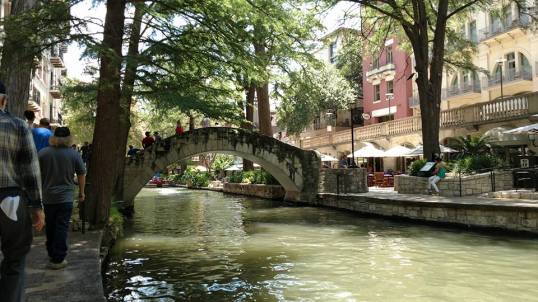I found a wonderful editorial piece that I wanted to share with my Spanish 4/5 class, but a) it was above their reading level and b) there were a number of historical and social references in the article that they could not relate to. I decide to scaffold both the reading and the references using an Embedded Reading. It worked better than I could have hoped! You can find the original piece here:
TODOS SOMOS EXCALIBUR
Here is the base reading:
Todos Somos Excalibur OPINIÓN
Llama la atención que, aunque Madrid fue víctima del terrorismo en 2004, la pública no quería organizar después del ataque a Charlie Hebdo. Nuestra reacción no fue nada.
Llama la atención que, en un país que recuperó las libertades hace menos de 40 años, nadie quisiera demostrar.
Llama la atención que españoles se reunieron usando un hashtag —#salvemosaExcalibur— para ayudar a un perro que nadie quisiera salir a la calle ahora.
Llama la atención que continúe el aislamiento de España.
Llama la atención a los españoles.
*********************************************************************************************************
It’s almost poetry. My students understood the words…but not the piece, or half of it anyway.
THEY DID UNDERSTAND the first sentence and its reference to the terrorism in Madrid. We had just finished the song “Jueves” by Oreja de Van Gogh, written in remembrance of the victims of that terrorism and had read/watched a few short pieces on the bombing.
THEY DID UNDERSTAND the references to the attack on Charlie Hebdo because we had been following that as part of our current events studies.
The rest were words and phrases that they understood, but really had no meaning.
There were three pieces that they needed a deeper understanding of in order to understand the author’s references:
1. How the Spanish Civil War separated Spain from the rest of the world.
2. How that separation was maintained throughout much of Francisco Franco’s rule.
3. What “Salvemos A Excalibur” was.
**********************************************************************************************
The first two were worthy of a few years study, but I wanted to just give them an overview. We’ll be doing a more in-depth study in a month or two and it is a very complex topic. It was tempting to go deep, but I tried to just outline the basics and answer any follow-up questions. VERY BASIC.
To do that I created several statements for them to read and ask questions about:
A. The Spanish Civil War was incredibly violent and affected nearly every facet of life in Spain.
B. Francisco France ruled Spain until the late 1970’s, sometimes with an iron fist.
C. Since his death, Spain has re-entered the global scene financially, culturally and socially.
The students worked in groups and created 3-5 questions. Each group asked me their questions and took notes on the answers from all of the groups. They then had time to create 1-2 more questions based on the new information and we repeated the process. At the end of the class they wrote any remaining questions on an “exit ticket” I picked three of those and provided the answers, in writing, the next day.
It’s amazing how, when a teacher will only provide a limited number of answers, how many students have questions!
****************************************************************************************
As for “Salvemos A Excalibur”, I modified an article and the students worked in groups to list what they understood. It was a great opportunity for them to realize how much they truly do understand!! Here is the piece:
salvemosaExcalibur
Frankly, we could have spent a long time on this story alone!! Many of my students are pet-lovers and this really struck a chord with them. Because they were fired up it led to great discussion and a willingness to write!!
Then we re-read the base story.
One student asked: Why would they get all excited about a dog…but not about people?
Bazinga!!! The magic question.
*************************************************************************************
Todos Somos Excalibur Opinion Version 2
I dealt with the left hand side of the page differently with different classes. Here are some options:
1. Have students work in groups to answer 2-4 questions and then share answers.
2. Do the above but have period 1 answer some questions, period 2 etc. and then share answers with all classes.
3. Provide the answers in 1-2 sentence, but out of order (in a list, on cards, on the board) and have students read and match answers to questions.
The students then read the newest version of the article. They underlined all of the text that they understood, then highlighted the parts that MADE SENSE TO THEM.
Then we formulated questions (using the left hand side as a model) for the information that they didn’t know.
**************************************************************************************
Then it was time to go to the computer lab. They had questions. They needed to find answers. They could search in either language, but if they found the answer in an English post/article, then they had to find a corresponding one in Spanish to verify it. (Great practice for using Google etc. in the target language!! Especially for upper levels!!)
The following day, in groups, they listed in Spanish, using the articles/posts, in language they truly understood, what answers they found. (in large poster format) By then going around the room, they came back to their own posters to add details, additional information etc. Someone then took a pic of the poster on his/her phone, shared it with whoever else had one and emailed one copy to me. I then printed copies for students to use if they preferred paper or did not have a phone.
These are now resources! The following day we played a favorite: Volleyball, and questions about the posters earned the right for each team to serve. They were allowed to use their phones/posters as resources!
***************************************************************************************
After a few days of other activities, we came back to Version 3.
Todos somos Excalibur OPINIÓN Version 3
First they read and highlighted the next level of the article…indicating what they understood. Then came the “treasure hunt” for the words on the left. One class is very competitive and wanted to race. So they did. :o) The next class didn’t care to, although I gave them the opportunity to. In the third class, they decided to divide into groups. Two competed against each other for time/accuracy and the others just worked at their own pace.
Observing this work allowed me to make decisions about which words/phrases would be good to use in Personalized Questions and Answers and/or story-asking.
Next week I’ll let them create short, short stories using 2 or more of the vocab/structures and we will have some fun with those!
*************************************************************************************
By now, these students have really understood this article, acquired some new vocab and felt very successful. I have two additional versions to use later in the year…..if I choose to. We will be starting that Post-Franco unit in a few weeks so I may pull them out. I also like to pull out the original version to show them how far they have come from reading the very first, base reading.
Todos somos Excalibur OPINIÓN Version 4
Todos somos Excalibur OPINIÓN Version 5
Will I? I don’t know. The truth is sometimes I am way more excited about these readings that my students will ever be. But I work with high schoolers. I need to be careful not to let my excitement with multiple levels become stronger than my ability to keep them interested!!!!!
If I don’t use them for classes (and I may not!), they make great work for kids who are out for an extended time or a student who needs “quiet time” outside of class with quiet work.
***********************************************************************************
All content of this website © Embedded Reading 2012-2015 or original authors. Unauthorized use or distribution of materials without express and written consent of the owners/authors is strictly prohibited. Examples and links may be used as long as clear and direct reference to the site and original authors is clearly established.


